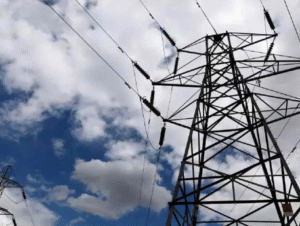
Why in News ?
-
-
Beginning in January 2026, the Central Electricity Regulatory Commission (CERC) intends to introduce market coupling in the power exchanges’ Day Ahead Market (DAM) segment.
-
Analysts and industry representatives think the power sector may not gain much from this action.
-
Market Coupling
-
Definition
-
-
In energy markets, market coupling is an economic model that establishes a single, consistent price for electricity across exchanges or trading platforms.
-
-
Current Power Exchanges in India
-
-
Indian Energy Exchange (IEX)
-
Power Exchange India Limited (PXIL)
-
Hindustan Power Exchange Limited (HPX)
-
-
Present Market Structure
-
-
These power dynamics are free markets in which each party:
-
independently gathers and sells bids
-
establishes its own market clearing price (MCP)
-
-
Electricity prices currently vary only a few paisas between exchanges.
-
Under Market Coupling
-
How It Works
-
All exchanges’ buy and sell bids will be merged and matched centrally under market coupling.
-
For the whole market, a consistent Market Clearing Price (MCP) will be found.
-
Power exchanges will only serve as venues for:
-
gathering bids
-
delivering electricity to purchasers
-
-
Benefits of Market Coupling
-
Efficiency and Integration
-
-
Improves the interconnected electricity markets’ efficiency and integration.
-
-
Energy Conservation
-
-
Lowers energy loss and permits greater resource use.
-
-
Market Liquidity
-
-
Permits participants to trade electricity across exchanges, increasing market liquidity.
-
-
Market Growth
-
-
Increases the power market’s overall:
-
trading volumes
-
participant count
-
-
मार्केट कपलिंग :
मार्केट कपलिंग पर वर्तमान समाचार
-
क्यों चर्चा में है
-
जनवरी 2026 से, केंद्रीय विद्युत नियामक आयोग (CERC) पावर एक्सचेंजों के डे अहेड मार्केट (DAM) खंड में मार्केट कपलिंग शुरू करने का इरादा रखता है।
-
विश्लेषकों और उद्योग प्रतिनिधियों का मानना है कि इस कदम से ऊर्जा क्षेत्र को अधिक लाभ नहीं हो सकता।
-
मार्केट कपलिंग के बारे में
-
परिभाषा
-
-
ऊर्जा बाजारों में, मार्केट कपलिंग एक आर्थिक मॉडल है जो एक्सचेंजों या ट्रेडिंग प्लेटफार्मों में बिजली के लिए एकल, सुसंगत मूल्य स्थापित करता है।
-
-
भारत में वर्तमान पावर एक्सचेंज
-
-
इंडियन एनर्जी एक्सचेंज (IEX)
-
पावर एक्सचेंज इंडिया लिमिटेड (PXIL)
-
हिंदुस्तान पावर एक्सचेंज लिमिटेड (HPX)
-
-
वर्तमान बाजार संरचना
-
-
ये पावर डायनेमिक्स स्वतंत्र बाजार हैं जिनमें प्रत्येक पक्ष:
-
स्वतंत्र रूप से बोलियां एकत्र करता और बेचता है
-
अपना स्वयं का मार्केट क्लियरिंग प्राइस (MCP) स्थापित करता है
-
-
वर्तमान में एक्सचेंजों के बीच बिजली की कीमतों में केवल कुछ पैसे का ही अंतर होता है।
-
मार्केट कपलिंग के तहत
-
यह कैसे काम करता है
-
सभी एक्सचेंजों की खरीद और बिक्री बोलियों को केंद्रिय रूप से एकत्रित और मिलान किया जाएगा।
-
पूरे बाजार के लिए एक सुसंगत मार्केट क्लियरिंग प्राइस (MCP) निर्धारित किया जाएगा।
-
पावर एक्सचेंज केवल निम्नलिखित के लिए मंच के रूप में कार्य करेंगे:
-
बोलियों को एकत्र करने के लिए
-
खरीदारों को बिजली पहुंचाने के लिए
-
-
मार्केट कपलिंग के लाभ
-
दक्षता और एकीकरण
-
-
इंटरकनेक्टेड बिजली बाजारों की दक्षता और एकीकरण में सुधार करता है।
-
-
ऊर्जा संरक्षण
-
-
ऊर्जा हानि को कम करता है और संसाधनों के बेहतर उपयोग की अनुमति देता है।
-
-
बाजार तरलता (लिक्विडिटी)
-
-
प्रतिभागियों को एक्सचेंजों के पार बिजली का व्यापार करने की अनुमति देता है, जिससे बाजार की तरलता बढ़ती है।
-
-
बाजार विकास
-
-
कुल पावर मार्केट के:
-
व्यापारिक वॉल्यूम
-
प्रतिभागियों की संख्या
को बढ़ाता है।
-
-




